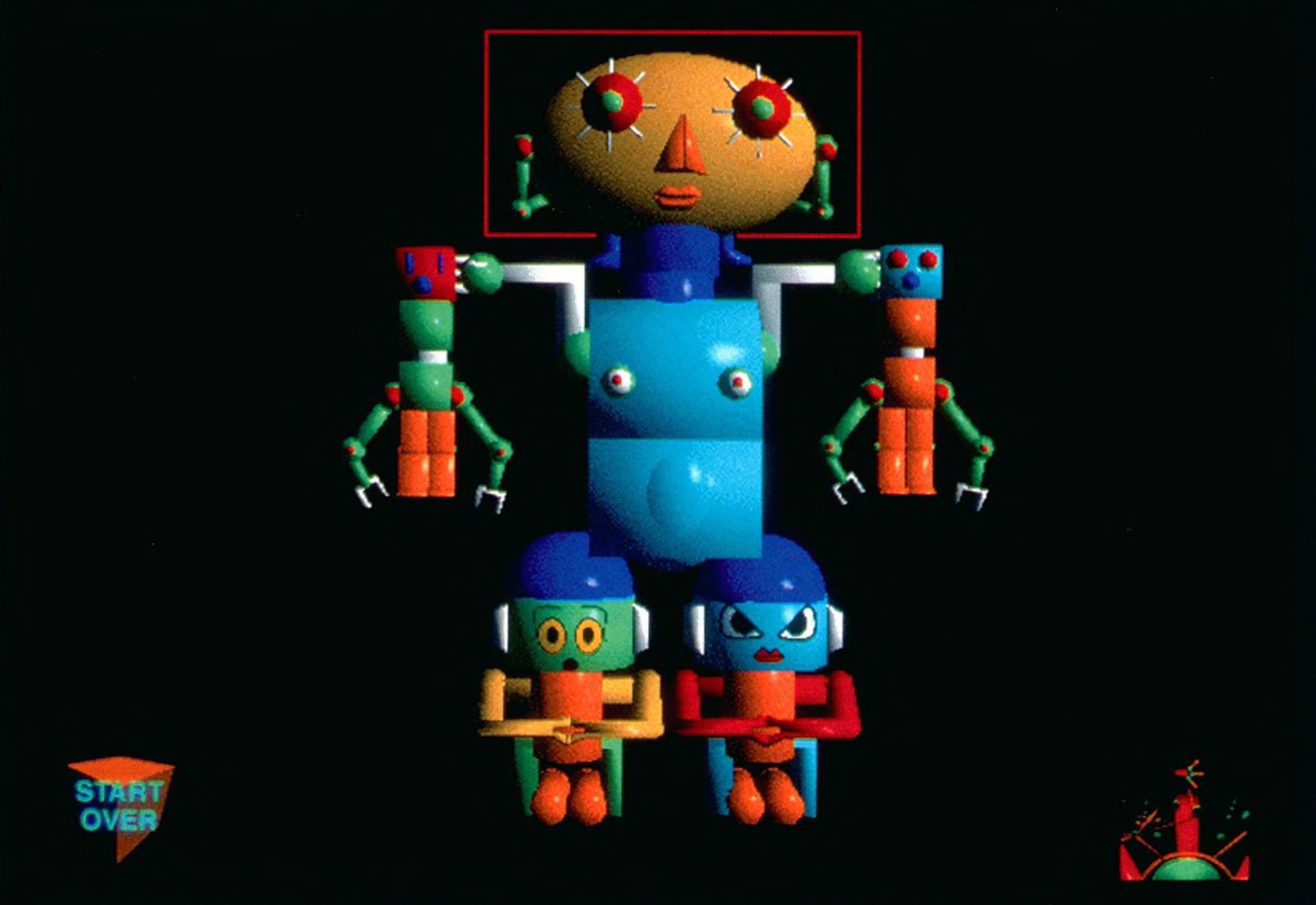“IDEA-ON>!: Database of Experience” by Innocent
Conference:
Experience Type(s):
Entry Number: 10
Title:
- IDEA-ON>!: Database of Experience
Program Title:
- The Edge
Organizer(s)/Presenter(s):
Collaborator(s):
Description:
ldea-ON>! is an electronic database of ideas and experiences, each one contained in a “place” in one of four “new realities,” which the user will discover through exploration. Many visual languages are combined, as the database borrows aspects of video games, landscape painting, interactive multimedia, and motion pictures to form a “new language.” Idea- ON>! also uses a personal language of forms and symbols, which manifest in the interface, the landscapes, and the beings that inhabit it. Through immersion and exploration, many different viewpoints become apparent, building up an experience that reflects the user’s expanding relationship with the work.
Body language, spoken word, written language, and symbolic systems fuse with our environment and media to create a range of spatial and temporal communication systems. Each of these “landscapes” has evolved its own codes with which it can be experienced and interpreted. However, new constructs of space are being created through the continual juxtaposition of a varying range of information in a hypermedia space. These spaces are constructed from “media” to create an involving, personal journey in a world that appears to live and breathe, and react to the user’s presence. Much like parts of today’s Internet, ldea-ON>! is a collection of thoughts and things, floating above and around the big information super highway. It is a space for exploration and discovery.
Idea-ON>! rejects traditional flatuser interface design and offers the user many different forms of engagement. Setting up the piece to be simply an “experience” with no need to promote a product, provide information, or communicate any consistent message has allowed the opportunity for freeform experimentation with the standard click = response routine. Things may happen without user interaction, the user may have to explore in more detail to find certain pathways, or responses given by the objects and beings will vary, often following a surreal kind of logic. It is interactivity for interactivity’s sake, experimentation with what is possible.
On-screen entities and agents allow the user to relate to another “intelligence”, rather than to a computing machine, similar to the way that people relate to actors in a film. In this same way, actions can be performed by the onscreen entities in response to the user’s choices and responses to them. Also, because they are animated and not real people, they can perform any role required of them via special effects and so on. The world in which they live follows it’s own rules. Entities and agents draw the user in because of their visual interest, giving the user a reason to keep exploring the interactive worlds. They can also symbolise ideas in an interactive, “physical” form, much like living, moving sculpture. For example, the NetBot is a large robot made of six smaller robots that act as vessels for various types of information. She is like a physical manifestation of a simple hierarchical computer desktop system, similar to a Russian doll, but shrinking in six directions.
Each of ldea-ON>!’s four “new realities” prototypes different aesthetic, structural, and communication-based approaches to virtual space:
Techno Garden
An electronically generated world that grows and exists like a coral reef. As time passes, more buttons sprout and grow from the organic landscape, backed by an atmosphere of organic sounds and strange computer noises. The garden is mapped out like a series of islands surrounded by a body of water. The structure seems chaotic, with many things linked back and forth in various directions.
Cybaroque World
A palace of flesh and body expansion, muscle building and health diets, gold and luxury, money and power, sex and material wealth. It uses aesthetic seduction to entice interaction with it, much like contemporary advertising, with samples of classical music and seductive voices throughout. Beings in this world are made of gold and luscious flesh, patterned with intricate swirls and decorative motifs. This world is very structured, with marble pathways leading you through the space.
Communication
Overload Data Sphere
Television, movies, soaps, magazines, satellite communications, street signs, samples from the mass media build up in layers of chaos to fill the screen. The sound track is a mix of electronic beeps and bops, electronically processed voices and samples. A communication sphere is entered through a gate, after which you rotate through eight pathways leading outwards in all directions. This is a world that is constantly expanding with the eight paths of information branching off into further subsets of each of the eight categories of information.
Celebration of the Iconbody
In this place, all things are communicated with gesture and symbol. Interaction occurs through fragments of a dance, which moves through a series of iconbody positions – human body positions that symbolically represent an emotion or human state of being. Varying beats play with chanting and electronic rhythm loops. The Celebration of the Iconbody is mapped out like a spiritual diagram of a deity, each location appearing as a colored energy sphere.
Visiting the ldea-ON>! installation can be likened to visiting a sacred site where spirits and myths reside. It is entered through a gateway, symbolising the transition to the “other reality.” The information space inside the computer becomes a dreaming or meditational space, a manifestation of the subconscious where the objective contents of thoughts are stored for others to explore and experience. Similar to the way pre-linguistic societies shared a body of myths and legends that made up their perception of the universe, a world like ldea-ON>! jumbles together many things towards a prototype of a dreamlike, surreal, communal cyberspace in which people dream, create, imagine, and play with thought and form.





